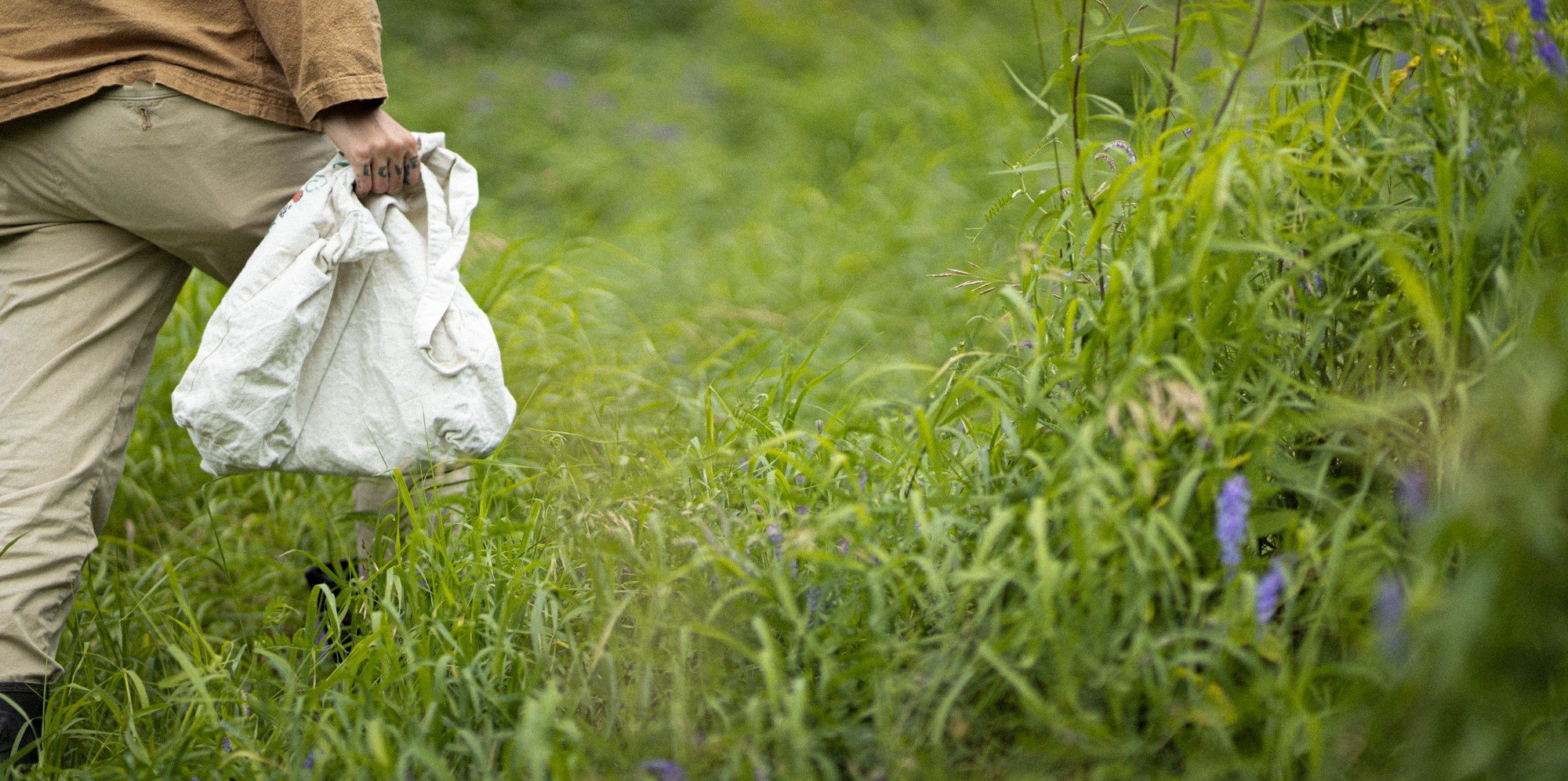5 Must-Have Spring Herbs to Forage and Use Year Round.
Spring finally feels like it’s here, and it’s so nice to see all the green returning. One of the things I’m doing right now is going through the herbs I foraged and dried last year to see what I need to harvest more of this year. Here are a few staples I try to stock up on to last me through until next spring:
Dandelion – Taraxacum officinale (a.k.a. my favourite flower)
I harvest the roots in the spring for the year ahead, as they are a hidden gem for the digestive tract. They help stimulate saliva (the start of our digestion) and gastric juices. Dandelion also increases bile production in the liver and supports bile release from the gallbladder. This herb is especially beneficial for women, as the liver plays a key role in hormone regulation.
I love to eat the leaves for the same reasons (though I don’t harvest them to store year-round). They’re amazing bitter greens that support digestion and stimulate appetite. One of the easiest ways to use them is by tossing them into salads, sandwiches, smoothies, or stir-fries! They're high in vitamins A, B, C, D, and choline. Dandelion is also a diuretic—but a very helpful one, as it doesn’t cause potassium loss. There’s so much you can do with dandelions, using all parts of the plant, so this is definitely one to get to know.
Cleavers – Galium aparine
Cleavers (nicknamed “sticky weed”) are a gentle yet effective herb for supporting the lymphatic system and promoting detoxification. They’re a great spring herb to help move things around in the body, aligning with the energetic shift of the season. Traditionally used to clear out toxins and support kidney function, cleavers help ensure our body's filtration systems are functioning optimally. This herb is all about cleansing the internal waters, so to speak.
I make sure to dry enough to have on hand through winter—especially during the shoulder seasons when things are up and down. When I feel congested or like I might be getting sick, this is one of the plants I turn to. In spring, it’s lovely to make a fresh juice from cleavers, dry it for teas, or even add it to broths and stocks for a nutrient boost. It also makes a great, simple body oil that can be used on areas where your lymph glands are located.
Red Raspberry Leaf (Rubus idaeus) & Blackberry Leaf (Rubus fruticosus)
Raspberry and blackberry leaves are most commonly used for women’s health. As a tea, they help tone and strengthen the uterus, ease menstrual discomfort, and support the endocrine system as a whole. These leaves are considered “tonics,” meaning they nourish and support the body over time, making them lovely for cyclical balance, hormonal support, and overall vitality.
They're also rich in vitamins C and E, magnesium, potassium, calcium, and iron making these also for immune function, skin clarity, energy levels, and nervous system support. They’re a steady, dependable plant when things feel out of rhythm or depleted.
I dry the leaves and often blend them with other herbs like nettle, lemon balm, or chamomile depending on the season or the intention of the blend. . There’s an abundance of raspberry and blackberry canes where I live, and I make sure to gather the leaves before the flower buds begin to form, while the energy of the plant is still in its foliage.
Stinging Nettle (Urtica dioica)
I forage it each spring not only to dry for teas, stocks, and broths, but also to blanch and freeze for winter greens. I also harvest the seeds later in the season to sprinkle onto meals—they’re rich and nutty with a grounding, strengthening energy.
Nettle is packed with vitamins and minerals—iron, calcium, magnesium, silica, potassium, and vitamins A, C, K, and several B vitamins—making it an excellent herb for overall wellness. It’s a wonderful support for those recovering from stress, burnout, or periods of depletion. I think of nettle as a food-like herb—strong, nourishing, and steady—offering building blocks the body can use to replenish itself.
It’s also known for its anti-inflammatory properties and its ability to support the body’s natural detoxification processes, particularly through the kidneys and lymphatic system. Nettle can be especially helpful for people experiencing seasonal allergies as it gently clears while also fortifying. Whether you're drinking it in tea, adding it to food, or using the seeds, a little goes a long way when used regularly and consistently.
A Note on Foraging Safety
Safety goes beyond just identifying the right plant. Make sure you know where you’re harvesting from, and understand that you're not the only creature who relies on that plant. Avoid foraging near busy roads, industrial areas with potential runoff, or places that may have been sprayed with chemicals. If you choose to forage, make sure you’ve correctly identified the plant. Cross-reference a few trusted sources and be aware of any look-alikes. If you're unsure, consider joining a plant ID walk to build confidence before trying things on your own.
Look for areas where the plant you’re seeking is thriving and abundant. A good rule of thumb when foraging is: “Don’t take the first one you see, and don’t take the last one you see.”



